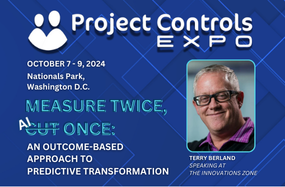
Tying Environmental Impact and More into BIM

Yesterday was all about moving from paper-based building plans to two-dimensional or three-dimensional CAD software. While CAD software still plays an important role in construction projects, its limitations have gradually come to the fore. CAD drawings provide static information about what a building will look like at a given moment such as final delivery. However, they do not provide information about how a building is likely to age or change with time or the environmental impact it will have over its projected lifetime. These aspects go beyond drawing. BIM or Building Information Modeling is already the solution today for extending from 3D CAD to 4D models, where the fourth dimension is time, and then on to further multi-dimensional models to encompass environmental impact and more.
Why Focus on Environmental Impact?
Several reasons encourage architects and designers to make the analysis of environmental impact a more important part of the building lifecycle. Construction waste is one of those reasons. A huge amount of construction work still adds no value to a building or results in waste that leads not only to ecological prejudice, but also financial loss. Public opinion is another, with stakeholders of many types (sponsors, end-users, partners) insisting on greener building design and operation. LEED (Leadership in Energy and Environmental Design) certification helps ‘sell’ a construction company as being a good corporate citizen concerning the environment. BIM is a tool that can support and facilitate such certification.
Ways to Go Green with BIM
The fact that BIM now also makes environmental impact that much easier to project and assess is yet another reason to use it for construction greening:
- Building orientation can be evaluated and defined to minimize energy requirements
- Building massing studies can be carried out to optimize the building envelope
- Daylight, water conservation and renewable energy options can be evaluated
- Sustainable and recycled building materials can integrated into the building model
- Logistics can be planned and managed to reduce energy usage and waste
- Intelligent buildings can provide feedback data after construction to assess ongoing impact.
What Else Will BIM Let You Integrate?
The list is already long. A BIM application can represent a repository for many different kinds of information that are all integral parts of building design, construction and maintenance, yet that cannot be managed in conventional CAD programs. Bid and contract documents, project timelines, costing and pricing information, and installation and maintenance guides are just some examples. Items like this can help define further dimensions within BIM: cost and operational requirements, for example. BIM does not force anyone to throw out 2D building plans either. With many construction companies still basing their activities on these, BIM allows for their integration for as long as they are still required. 3D plans then allow visualization and prefabrication, 4D adds in time, 5D contributes environmental analysis, 6D BIM can make cost projections available and so on. BIM can extend to ‘X-D’, where X is the number of different dimensions or factors that a construction company wants to model. With a BIM-centric approach, companies are then likely to have all the modeling freedom they want for the foreseeable future.








